
All categories
Featured selections
Trade Assurance
Buyer Central
Help Center
Get the app
Become a supplier

(239 products available)
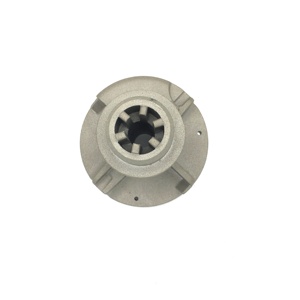


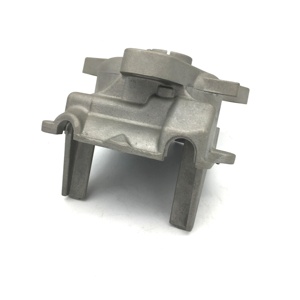










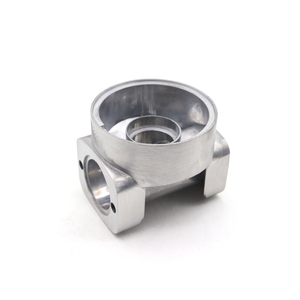

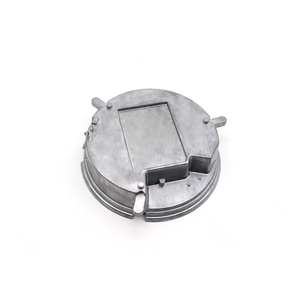


















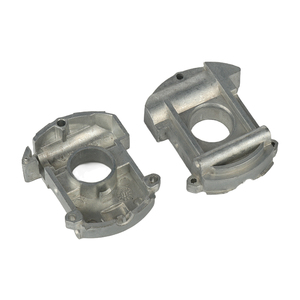
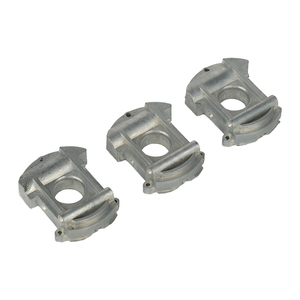

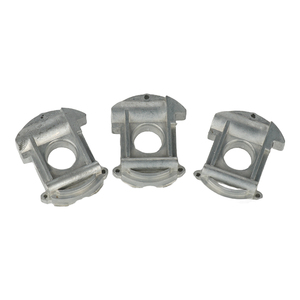



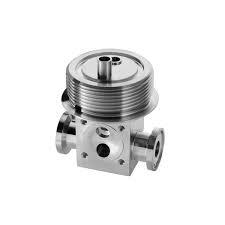









Aluminium die cast end caps are manufactured using variegated alloys. Each of these has distinct properties tailored for particular applications. Below are some of the common types of aluminium alloys used.
1000 Series
These series are formed of at least 99% pure aluminium. 1000 series alloys are used in die casting end caps owing to their exceptional resistance to corrosion, high thermal conductivity, and electrical conductivity. These properties make them suitable for long periods of outdoor or hazardous environments and electronic components.
3000 Series
This series of alloys include manganese, which makes them slightly more resistant to corrosion than 1000-series alloys. This property makes it ideal when the caps are meant to be used in environments with chemical exposure or moisture. 3000 series end caps also retain compatibility with food and chemical storage due to their non-toxic surface.
4000 Series
The silicon content which lowers the melting point makes die casting quick and efficient. This alloy is particularly suitable for automotive applications due to their thermal resistance properties. Thus, they are utilized as end caps in emission control devices and exhaust systems.
5000 Series
This alloy contains magnesium which improves resistance to corrosion and enhances the alloy's strength. These properties make 5000 end caps useful in marine environments such as boat engines and parts that require long term exposure to seawater. These end caps can also be employed in structural components where durability is critical.
7000 Series
These include zinc and other elements to enhance strength. While not as commonly used in die casting as lower series, these end caps are employed in high-stress environments such as aerospace components. It supports structural integrity.
Aluminium end caps for pipes have a variegated usage across different industries. Generally, these are critical components for both functionality and aesthetics. Below are some of the uses of aluminium die cast end caps.
Protection and Sealing
One key utilization of aluminium die cast end caps is to protect the internal components of tubular structures such as pipes and tubes from external elements like dirt, moisture, and dust. Such exposure leads to system failures or corrosion. End caps serve as effective barriers, ensuring that the sensitive parts within these structures remain untouched and fully functional. Furthermore, these end caps create sealing to prevent leakage. It ensures that contents within the pipes or tubes are retained without escape.
Structural Support and Reinforcement
Diecast end Caps provide added strength to the open ends of pipes or tubes by preventing them from becoming deformed or damaged. In high-stress industrial applications, this reinforcement is critical. It helps to extend the longevity of both the end caps and the underlying structure. Such protection contributes to improved reliability throughout the manufactured equipment. As such, it reduces the need for costly repairs or replacements in the long run.
Aesthetic Finishing
Aluminium die cast end caps are used in the automotive and consumer electronics industries to offer a sleek and polished finish. These end caps come in various sizes and shapes that ensure the users get a customized or standard fit. Such variety helps improve the overall visual appeal. It is particularly critical for products where sleek designs heavily influence customer perception. This functionality not only enhances the product's aesthetic but also provides functionality by covering and protecting vulnerable components.
Heat Dissipation
Aluminium is known for its exceptional heat-dissipating ability. These end caps are used in electronic enclosures to assist in thermal management. Such applications are critical in preventing overheating. thus ensuring components like resistors, transistors, and other critical electrical parts operate within their optimal temperature range. By effectively dissipating excess heat, these end caps contribute to improved performance and longevity of electronic devices. They also safeguard against thermal damage.
Identification and Safety
The installation of these end of pipe aluminum caps helps improve safety measures within industrial or commercial environments. They are highly visible and allow quick identification of hazards such as open ends on high-pressure piping systems. Their recognition drastically reduces the chances of accidental injuries by providing clear indicators of potential dangers. In addition, some end caps can be easily customized to be colour-coded. This property helps instantly identify specified areas or equipment. Thus, it improves safety protocols and maintenance guidelines.
The key specifications of aluminium die-cast end caps are important to know as they inform their usability across variegated applications. Also understanding the maintenance plays a vital role in longevity and functionality. Below are details on specifications and maintenance.
Material Composition
Aluminium die cast end caps are manufactured using an alloy of typically ADC12 aluminium with zinc metal. These materials offer high tensile strength and are corrosion resistant. They provide more than adequate durability against extreme temperatures, mechanical stress, and chemical exposure.
Dimensional Accuracy
Aluminium die cast end caps are manufactured with stringent dimensional tolerances. They ensure a snug fit and proper sealing. This property prevents leakage and prolongs the life of the equipment. Precision machining of these end caps guarantees uniformity throughout batches. This makes it ideal for mass production in auto or industrial manufacturing.
Surface Treatment
These end caps can be anodized, powder-coated, or painted to improve corrosion resistance and aesthetic appeal. Surface finishes are critical for enhancing the durability of end caps exposed to outdoor elements. Such elements include moisture, salt air, or chemicals. anodizing adds a thick porous layer. It provides a non-conductive finish that is highly resistant to rust and is available in multiple colours.
Thermal Resistance
Aluminium die cast end caps are manufactured to withstand vast temperatures ranging from -40°C to 120°C. This makes them ideal in automotive or electrical applications where heat dissipation is critical. Furthermore, these end caps maintain structural integrity over extreme temperatures to prevent system failures.
Compatibility
Manufacturers produce these end caps in various sizes. They range from M10 to M24 for metric sizes and ⅜ inches to 1 inch for imperial sizes. They also come with multiple thread types. They include BSPP, NPT, and UNC, to mention a few. Such variety helps make sure the end caps are compatible with a diversified range of pipes, tubes, and other machinery components.
Regular Inspections
It is important to conduct frequent assessments of aluminium die cast end caps. The inspection helps to uncover early signs of corrosion, wear, or physical damage such as cracks or deformation. Catching these anomalies early on allows for proactive replacements, ensuring operational efficiency remains uninterrupted.
Emphasis on Cleaning
Regularly cleaning end caps makes a difference in their longevity. Users should use mild soap and water to eliminate dirt, grime, and chemical residues that lead to corrosion over time. Avoiding harsh abrasive cleaners protects the surface integrity of end caps. This helps maintain their protective function for more extended periods.
Lubrication
A friction nuisance occurs when end caps come into contact with other components. This can hinder their general functionality. To curb friction, it is critical to apply a thin layer of lubricant between the end cap and the connector. This helps boost ease of installation while also preventing premature wear. Note that manufacturers have lubricant-specific types. Therefore, before going for one, ensure it is compatible with aluminium.
Proper Installation
Proper installation ensures the longevity of aluminum diecast endcaps. This is because end caps that are installed incorrectly come with the risks of leaks or mechanical failures. Users should always refer to the manufacturer's guidelines to ensure the correct application of torque and sealing. This plays a double duty of ensuring safety and prolonging the lifespan of the end caps.
Preventative Measures
Taking preventative measures such as regularly replacing worn or damaged end caps makes it a critical way to maintain system integrity. This is because continued use of damaged end caps hampers protection and leads to failure over time. Additionally, using corrosion-resistant variants in highly acidic or salty environments increases lifespan.
There are several factors to consider when selecting aluminum end pipe caps. They ensure users get the most suitable end caps for their defined applications. Below are some of the key elements to factor in.
Material and Alloy Composition
Aluminium die cast end caps are manufactured using a variety of alloys. Each comes with distinct benefits. For instance, caps made of pure 1100 alloy will be highly resistant to corrosion. On the other hand, those are made of ADC12 alloy which is easily machinable. Users should consider these factors when going for one to ensure they select an end cap that offers the necessary strength and durability. These attributes also help guarantee the end cap's lifespan in the user’s environment.
Cap Size
End cap sizes are critical as users have to ensure they have end caps whose diameters match the diameter of their pipes or tubes. Go for larger ones if only slight adjustments are required. Conversely, smaller ones will necessitate intensive machining to fit into larger spaces. Using the correct size makes sure there is proper sealing and minimal the risk of leaks.
Surface Finish
Manufacturers avail aluminium diecast end caps in different surface finishes. They include anodized, powder-coated, or plated. Each of these has its advantages when it comes to corrosion resistance. Anodized end caps are effective for outdoor applications where long-term exposure to moisture is inevitable. On the other hand, powder-coated end caps offer an appealing look while still protecting against corrosion.
Load and Stress Handling Capabilities
The intended application directly affects the load and stress that end caps will experience. For high-pressure environments, users should consider end caps fabricated with high-strength alloys like 6063 or 6061. They can handle mechanical stress without deforming. Knowing these properties helps users go for end caps that maintain integrity and safety during extreme operating conditions.
Ease of Installation
Some end caps come equipped with features that ease their installation. Such features include threaded designs or tapered ends for a more accurate fit. Going for these comes with the added benefit of reducing installation time and ensuring a snug fit. These will also minimize the chances of leaks by providing enhanced sealing.
Cost-Effectiveness
The price of these end caps is highly influenced by the material, alloy, and manufacturing process. Therefore, business owners will be tempted to go for the cheapest. However, with the factors mentioned above, one has to remember that it is critical to acquire end caps that are durable and can handle specified operating conditions. Instead, weigh the costs against long-term benefits such as reduced maintenance and improved safety. This way, users will get ideal end caps that have optimum performance, longevity, and budget efficiency.
Recycling these end caps is not only possible but also quite beneficial. This is because aluminium itself is endlessly recyclable without degradation of quality. The recycling process significantly saves energy compared to producing new aluminium. This property makes recycled aluminium a more sustainable alternative.
Generally, these end caps are manufactured to fit pipes made from assorted materials such as stainless steel, copper, or PVC. It achieve a smooth and uniform sealing. Nonetheless, the compatibility may thence be influenced by the specific diameter and thread type. It is imperative that business owners select end caps that correspond to the diameter of their pipes for optimal performance.
The longevity of these end caps essentially depends on the operating environment and load they handle. In highly volatile environments like chemical plants, end caps may need to be replaced more regularly than those in automotive applications. It generally recommends periodic inspections to ascertain wear, corrosion, or mechanical damage. It helps inform replacement needs proactively before they adversely affect system performance.
End caps manufactured using aluminium alloy 443 typically handle extreme temperatures that range between -40°C and 120°C. This makes them ideal for assorted automotive and electrical applications and preventing system failure in these extreme temperatures.